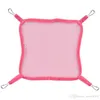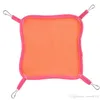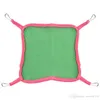For wooden chicken coop consumers, regular cleaning and maintenance are crucial for longevity. This article provides tips, recommended products, and techniques for proper upkeep. It also delves into the impact of environmental factors on wooden coops and offers best practices for protection against rain, snow, and sunlight. Additionally, it covers pest prevention and natural insect repellents for chickens, as well as identifying and repairing wear and tear. With this comprehensive guide, wooden chicken coop owners can ensure their coops remain in top condition for their feathered friends.








Regular Cleaning and Maintenance
Importance of Regular Cleaning and Maintenance:
A dirty coop can lead to various health problems for your chickens, including respiratory issues, infections, and parasites. Accumulated dirt and debris can harbor bacteria, mold, and fungi, which can cause respiratory illnesses. Dirty coops also attract pests, such as mites, lice, and rodents, which can cause infestations and spread diseases.
Regular cleaning and maintenance also help to prolong the life of your wooden chicken coop. Wooden coops are prone to rotting and warping due to exposure to moisture, which can be exacerbated by the accumulation of dirt and debris. By keeping your coop clean and dry, you can prevent damage and ensure that it stays in good condition for longer.
Tips for Cleaning and Maintaining a Wooden Chicken Coop:
1. Remove all bedding and litter from the coop and dispose of it properly. Use a pitchfork or shovel to scoop out any large debris or droppings.
2. Sweep or vacuum the floor and walls of the coop to remove any remaining debris or dust.
3. Scrub the surfaces of the coop with a solution of mild soap and water. Avoid using harsh chemicals, as they can be harmful to your chickens. You can also use vinegar or hydrogen peroxide mixed with water for a natural cleaning solution.
4. Rinse the coop thoroughly with clean water and allow it to dry completely before adding new bedding and litter.
5. Inspect the coop regularly for signs of damage or wear and tear. Replace any damaged or rotted wood and repair any holes or gaps to prevent pests from entering.
Recommended Cleaning Products:
1. ECO-CLEAN Solutions All-Purpose Cleaner – This eco-friendly cleaner is safe for use on wooden chicken coops and contains no harmful chemicals.
2. Simple Green All-Purpose Cleaner – This multi-purpose cleaner is effective at removing dirt and grime and is safe for use around animals.
3. Manna Pro Poultry Protector – This natural pest control solution is safe for use on chickens and can help prevent infestations of mites, lice, and other pests.
Protection Against Environmental Factors
Understanding the Impact
Wooden chicken coops are vulnerable to weather-related damage due to their porous nature. Rain and snow can seep into the wood, causing it to expand and contract, which can lead to warping, rotting, and cracking. Additionally, direct sunlight can cause the wood to dry out, leading to fading and cracking. Prolonged exposure to these environmental factors can significantly shorten the lifespan of your coop.
Best Practices for Protection
To protect your wooden chicken coop from environmental factors, there are several best practices you can follow. Firstly, ensure that your coop is elevated off the ground to prevent moisture buildup. This can be done by placing the coop on cinder blocks or a sturdy frame. Secondly, ensure that your coop has adequate ventilation to allow for air circulation, reducing the risk of moisture buildup.
Thirdly, consider adding a protective layer to your coop. There are many options available, such as paint, stain, or sealant. These not only protect against moisture but also provide added protection against insects and other pests. When applying these products, ensure that you follow the manufacturer’s instructions carefully.
Recommended Materials
When selecting materials for your wooden chicken coop, there are several weather-resistant options available. Cedar and redwood are both naturally resistant to decay and insect damage, making them excellent choices for outdoor structures. Pressure-treated lumber is another option, as it has been treated with chemicals to resist decay and insect damage.
In addition to wood selection, consider using metal roofing instead of traditional shingles. Metal is more durable and weather-resistant, providing superior protection against the elements. Other weather-resistant materials to consider include fiberglass and plastic panels.
Preventing Pests and Insects
Common Pests and Insects that Can Damage a Wooden Chicken Coop
Pests and insects that commonly infest chicken coops include rats, mice, snakes, ants, termites, and mites. These pests can cause various problems, such as damaging the structure of the coop, spreading diseases, and harming your chickens. Rats and mice can also eat your chicken’s feed, causing them to become malnourished.
Termites, ants, and mites can cause significant structural damage to your coop, leading to costly repairs. Snakes can harm your chickens and reduce their egg production. Additionally, some pests and insects can lay eggs in your chicken’s bedding, leading to infestations that take a long time to eradicate.
Tips for Preventing Infestations and Keeping Pests Away
To prevent infestations and keep pests away from your wooden chicken coop, there are several things you can do:
1. Keep the coop clean: Regularly clean the coop by removing debris, old feed, and bedding. This will help prevent infestations and keep pests away.
2. Seal all cracks and holes: Check for any cracks or holes in the coop’s structure and seal them with caulking or wire mesh to prevent pests from entering.
3. Store feed properly: Use airtight containers to store your chicken’s feed and keep it away from rodents and other pests.
4. Trim vegetation around the coop: Overgrown vegetation can provide hiding places for pests and insects. Regularly trim trees and bushes around the coop to eliminate these hiding spots.
5. Use natural pest control methods: Some natural pest control methods include using diatomaceous earth, citronella candles, and essential oils like lavender and peppermint. These natural methods are effective in repelling pests and insects without harming your chickens.
Recommended Natural Insect Repellents for Chickens
Natural insect repellents are an effective way to repel pests and insects from your wooden chicken coop. Here are some recommended natural insect repellents for chickens:
1. Diatomaceous Earth: This is a powdery substance made from fossilized algae. It works by dehydrating insects and pests, effectively killing them.
2. Citronella Candles: Citronella candles emit a scent that repels mosquitoes and other flying insects.
3. Lavender Essential Oil: Lavender oil has a calming effect on chickens and repels mites and lice.
4. Peppermint Essential Oil: Peppermint oil repels ants, fleas, and flies while also giving the coop a refreshing scent.
Repairing and Refurbishing Your Wooden Chicken Coop
The first step in repairing and refurbishing a damaged coop is identifying the areas that need attention. Take a thorough walkthrough of the coop and inspect each part carefully. Make a list of all the areas that need repair or replacement, and prioritize them based on their urgency.
Once you have identified the problem areas, it’s time to start the repair work. The tools and materials needed for the job will depend on the specific repairs required. However, a standard toolbox should include a hammer, screwdriver, pliers, saw, drill, sandpaper, nails, screws, and wood glue.
One common repair needed in wooden chicken coops is fixing cracks or holes in the wood. Use a wood filler to fill in any gaps or holes in the coop, and let it dry completely before sanding down the surface.
Another common issue is loose or missing hardware such as hinges, latches, or handles. Check all these parts and replace any that are damaged or worn out. Make sure all hardware is properly tightened and secured to prevent any further damage.
If the coop flooring is damaged, it may need to be replaced entirely. Remove any damaged boards and replace them with new ones, taking care to ensure they are properly secured.
The roof is also an essential component of the coop. If it is damaged or leaking, it can cause serious problems for your chickens. Inspect the roof for any signs of wear and tear, and replace any damaged shingles or panels.
In addition to repair work, it’s also important to give your coop a good cleaning and disinfecting regularly. This will help prevent the spread of disease and keep your chickens healthy. Use a mild soap and water solution to clean all surfaces, and then apply a disinfectant spray to kill any remaining bacteria.
In summary, repairing and refurbishing your wooden chicken coop involves identifying signs of wear and tear, prioritizing repairs, and having the necessary tools and materials on hand. By taking care of your coop and addressing issues promptly, you can ensure the health and safety of your chickens and extend the life of your coop.
FAQ
Q1. What is the best way to clean and maintain a wooden chicken coop for longevity?
Regularly cleaning your wooden chicken coop is essential for its longevity. Start by removing all the bedding, droppings, and debris from the coop’s interior. Use a mild detergent and water solution to scrub down the surfaces, then rinse thoroughly. Allow the coop to dry completely before adding fresh bedding. Additionally, inspect and repair any damaged or weathered wood, as well as any hardware such as hinges and latches.
Q2. How can I protect my wooden chicken coop from the elements?
To protect your wooden chicken coop from the elements, it’s important to apply a high-quality exterior wood sealant or paint. This will help to prevent moisture from seeping into the wood, which can lead to rot and decay. Make sure to reapply the sealant or paint as needed, typically every 1-2 years, depending on the climate and exposure to sunlight and moisture.
Q3. What are some key maintenance tasks to perform on a regular basis?
In addition to regular cleaning and protecting the wood from the elements, there are a few other maintenance tasks to keep in mind. It’s important to regularly inspect the coop for any signs of damage, including cracks, loose boards, or insect infestations. Perform routine checks on the coop’s roof, making sure there are no leaks or areas of weakness. Lastly, keep an eye on the coop’s ventilation system to ensure that it’s functioning properly and providing adequate airflow for your chickens.
Q4. Are there any specific cleaning products or tools recommended for maintaining a wooden chicken coop?
When it comes to cleaning a wooden chicken coop, it’s best to use mild, non-toxic detergents that won’t harm your chickens. A mixture of dish soap and water is often sufficient for cleaning the coop’s surfaces. Additionally, having a sturdy scrub brush, hose, and a good quality sealant or paint for protecting the wood are essential tools for maintaining a wooden chicken coop. Avoid using harsh chemicals or power washers, as these can damage the wood and pose health risks to your chickens.

